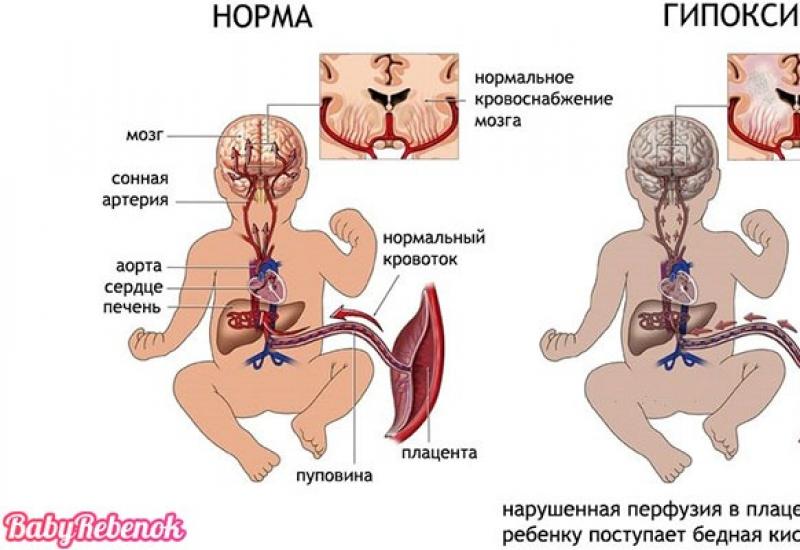Why people in Istanbul love cats. Bosphorus cats
The largest city in Turkey amazes tourists not only with historical sights, but also with the number of cats.
Istanbul - a mix of Europe and Asia - leaves no one indifferent. You can either love it at first sight, or not accept it. The Blue Mosque and the Hagia Sophia, majestic palaces and soaring minarets…
Songs of the muezzin, fresh sea breeze, aromas of coffee and spices. And cats. Red, tortoiseshell, black, white, striped, fluffy, smooth-haired ... There are so many cats that the mustache-striped ones can be called the owners of the city with confidence. Their house is all Istanbul.
Scheduled lunch and own home
It is difficult to say what the well-being of Istanbul cats depends on. There are several versions of this. According to one of them, this is the favorite animal of the prophet.
One day the cat fell asleep on his robe. And when Muhammad needed to leave, he simply cut off the floor of his clothes so as not to disturb his pet. In another version of the legend, the cat frightened off a poisonous snake that was about to sting the prophet.
Another version is less romantic, but more vital. Istanbul, in the old days mostly wooden, suffered from hordes of mice and rats. Cats have become a real lifesaver. Although they were not always paid with gratitude.
So, in 1935, the editor of the British magazine The Spectator, Evelyn Ranch, wrote that he saw cats everywhere - dirty, sick, dying under the wheels of cars. Fortunately, a lot has changed in 80 years. Now the cats in Istanbul are full and happy.


They even have well-appointed houses. Someone new, someone shabby, but their own. And those who live near hotels or shops have personal living space at all: their names appear on wooden or plastic houses. Whether cats live according to their residence permit remains a mystery to me. But near cafes and shops, in parks and yards, there are always bowls of food and water.
Tourists simply do not have the opportunity to pass by these four-legged creatures. Because Istanbul cats love to be the center of attention. If you fall apart freely, then on the famous Turkish carpets. Or next to the most beautiful ceramic vase. Younger and more curious of them prefer street cafes: they jump on the knees of visitors, fawn and play. Or they can just sleep on chairs. Moreover, neither the waiters nor the guests will drive away the sleeping purr.
Almost all tourists want to pet and treat the cat. However, cat food is difficult to find in a regular store, and specialized ones are rare. But cats do not refuse cheese and sausage.


Some cats have the tips of their right ears cut off. Istanbul residents say that sterilized cats are marked in this way - the authorities are trying to monitor the population of small predators.
Surrounded by care and attention, Istanbul cats feel safe. For two weeks of active walks around the city, I saw only one crippled feline - the camelina had no paw. At the same time, he was very well-fed, mobile and, it seems, quite satisfied with life. The cat lives near the hotel, located near the tram tracks. Perhaps the redhead lost his paws there.
However, the family, as they say, is not without its black sheep. I had a chance to observe the most unpleasant scene. A young Turk set a dog, most likely for fun, on a cat walking near his store. The cat rushed along the evening highway, not paying attention to the cars, and passers-by tried to drive the dog away. Luckily, the cat was able to escape.


Harem rivals
Istanbul cats feel very comfortable not only in shops, cafes, offices, but even in the most important sights of the former Constantinople. So, in the famous Hagia Sophia, several cats live permanently. And they are allowed almost everything here: they walk where tourists are forbidden to go, busily go about their cat business in a crowd of foreigners, and some even graciously allow themselves to be stroked.
There are also many cats in the historical complex of Topkapi - the palace where the families of the sultans lived for centuries and where the Slavic Anastasia Lisovskaya ruled more than four centuries ago. Special houses have also been made for cats on the territory of the palace, and the museum keepers are happy to feed fluffies.
By the way, cats arouse no less interest and admiration among tourists than the famous harem or the chambers of the padishah.
It would seem that they are just ordinary cats, but they are so organically and firmly woven into the flavor of Istanbul that if you remove them, the city will lose some of its charm. They are as eternal as the city itself on seven hills.
Istanbul cats November 6th, 2017
One important sight of Istanbul should be told separately.
These are Istanbul cats.
It seems that they are the real inhabitants of this ancient city, they have always been here and always will be, and we, people, are only transient in the life of this city and its cats.
Once I wrote about Italian cats -
It's Istanbul time.
Unlike the cats of Rome, whose habitats are known, Istanbul cats are everywhere. In sparkling squares and poor lanes, in famous museums and mosques.
And everywhere they feel at home, naturally and calmly.
The first one who met us at the ancient column of Hagia Sophia was a cat, not paying attention to the tourists scurrying around and thinking about something .. probably as eternal as the temple and the city ..
Gone are the days of the sultans, but no matter how the cat, imposingly and imperturbably, like a true sultan, will pass through the painted floors of the Topkapi Palace ..
This one definitely does not respond without the prefix "effendi"!)))
Cats lie on the lawns of Sultanahmet Square, slowly wander around the cemetery near the Suleymaniye Mosque, without disturbing the peace of the great Sultan and his Alexandra Anastasia Lisowska
Relax by the ancient fountains
And in any other place that got in their cat's way
It is worth sitting down on one of the small squares - and arching your back, multi-colored plush animals come out to you with a welcoming murrrr.
Unlike skinny and always hungry Cypriot cats, ready to snatch a piece of bread from their hands, the cats of Istanbul are simply friendly, they are fed and most of them have their own house, sometimes right on the street.
Our morning began with the trio waiting for breakfast at the door of a neighboring hotel - here on the street there is a normal cat house from a pet store and a whole line of bowls stretched right down the street.
There may be a cat house and such (the following two photographs are from the Internet)


In Malaya Hagia Sophia there is a whole cat canteen, and no less than a dozen cats of all sizes and colors come running there for dinner.
Sometimes cat feeders are not a bowl, but such a canister with a hole cut out so that the rain does not wet the food.
The cat Tombili (as all fat-faced domestic animals are called in Turkey) has long been a real symbol of Istanbul, he contemplated life flashing by, lazily leaning on the curb.
Photos of Tombili went around the world, he became the hero of numerous Internet memes, and after his death, as they say, at a very respectable age, his bronze double appeared in Tombili's favorite place.
Moreover, before the installation of the monument, local residents hung a poster: “You will forever remain in our hearts,” and a local sculptor installed a small clay sculpture for free.
The monument was opened on the day of memory of St. Francis of Assisi, known for his special relationship with animals. Moreover, the residents of the city themselves insisted on installing the monument, signing a petition addressed to the mayor.
True, I read that the monument was stolen, but I could not be sure.
Of course, in any old city there is an acute problem of mice and rats, and it is clear that cats cannot be dispensed with. (In Umbrian Spello, there is also a whole street with bowls near the fortress walls, where locals pour water and put food, because in a medieval town, where every house has a sign with the date of the last rat treatment, cats are necessary).
Istanbul is no exception, where from time immemorial they have tried to keep a cat in the house.
But here it is also something else. In Islam, cats have a special relationship.
It is believed that the cat is the favorite animal of the Prophet Muhammad, she once saved the Prophet from a poisonous snake. After that, the prophet touched the back of the animal, and the cat acquired the ability to always land on all fours.
There is a parable that once the Prophet had to urgently go somewhere, but a cat was sleeping on his robe. And then the Prophet carefully cut out a piece of clothing so as not to disturb the cat.
And today, the waiter will respectfully go around the cat, who fell asleep in the middle of the restaurant.
The proverb says - "Whoever killed a cat should build a mosque and ask for forgiveness from Allah"
Perhaps, cats play an important role in the special energy and charm of this eternal city. A city where cats feel like owners cannot be bad!
Not so long ago, a documentary about Istanbul cats was released.
The video is here / I highly recommend watching it!
And it begins with the words
“Cats are aware of the existence of God. After all, if for a dog God is a person, in which their whole canine world is, then for cats this is not so. They just know better."
It's easy to believe!
Cat photos rule the internet!
I spent last weekend in Istanbul. I have never seen so many cats and dogs in any other city. I suggest you see what they do and how they live.
I'll start with dogs. There are many of them on the streets of Istanbul. This company was resting on the lawn near one of the piers in the Asian part of the city.

By the way, not only dogs rest on the lawn. 
All large stray dogs are marked with electronic chips - this ear tag. The chip has a medical history, information about the area where the dog lives.
In one Turkish publication, there is a story about the use of these chips and the attitude towards stray dogs in general. Local authorities are guided by the law on the protection of animals, which says that stray animals must be caught, sterilized, left under supervision for the necessary time, and then released back to the place where they were caught.
On the other hand, in the same publication there are articles about rallies held by animal rights activists against their mass destruction. 
There were always a lot of stray dogs and cats in Istanbul - this is part of the culture. At the beginning of the 20th century, the authorities thought about reducing their number. But since no one wanted to kill them, the dogs were put on ships, taken to the islands in the Sea of Marmara and left there to die. There are legends that their barking was heard for several more months on the mainland.
I have no doubt that they are being destroyed even now (otherwise there would be many times more of them), but I think that Istanbul stray dogs are not the most unfortunate in the world. The ones I saw didn't look hungry or sick. 
There are more cats than dogs. They are more difficult to catch and they need less food to feed themselves. They come across about every 100 meters. They love to sit in cafes and garbage dumps. There are two types of cats in the cafe. Those who trade there unofficially, like, for example, these ones. 
Compassionate visitors will definitely throw something from the plate. True, the waiters can drive away. 
And officially employed. Waiters play with cute kittens at the entrance to attract tourists. 
The two were spotted on an armchair in one of the cafes. Clearly a marketing ploy. 
This cat slept on a stack of bedding in front of a shop window. Two days in a row we passed by this store and two days the cat was in the same place. He breathes and moves, so it looks like this is his workplace. Sleeping for food. 
"Freelancer" in the backyard of a small cafe with scattered pieces of bread. Not so hot what food, but still. 
The free artist hid under the table in anticipation of visitors. 
Real happiness is guarding a box of cat food. Fishing place. 
This one was less fortunate - he is among the bowls for flowers and some kind of fertilizer. Not as many temptations as the previous one. 
Find the cat among the cucumbers. 
Showcase of a hardware store. 
Cats in the market at the seller of toys. 
This one is lying in front of the gates of a residential building, clearly looking like an owner. 
This one looks like a bodyguard. 
This cat's name is Sultana. The owner said that she really likes to swim and even wrote about her in Lonely Planet about this. I have an LP of 2007 and I didn’t find anything about any Sultana there. I hope that in the newer release there is truth.
But not everyone had enough jobs in shops and cafes. This cat with a sad look lives in the garbage. 
This one is in the park. 
In the park, but with friends. 
The cats know that people come to the park to eat chicken doner or a hamburger on the bench. Then you have to sit down and look into the eyes. 
Be sure to drop something and even stroke it. 
Sometimes dogs come to the park. 
Then the familiar place must be defended. 
You can also find a lot of things in the urns. 

The red-haired sadly sat together with the impudent seagulls. Tough competition. 
In general, it seems to me that Istanbul cats live well. The climate is wonderful, the people are kind. 
Most cats are very affectionate. People are not afraid and willingly allow themselves to be stroked. 
There are also large snails and seagulls in Istanbul. 

And a few more cats.
February 20th, 2016 , 11:50 am
Or cats, go figure it out at a glance)).
Before traveling to Istanbul, I knew that there are many cats throughout Turkey. But the fact that they are here literally at every step, I was not ready for this.
It is difficult to take a few steps to the side so that the cat does not get into the field of view or under the feet. Just some kind of cat kingdom!
Cats in the city expanse: they walk the streets, like full-fledged owners of the roads, loiter along the steps and fences, endlessly bask in the sun and fawn on random passers-by, who are happy to pet and feed them.
I'm not a big fan of cats (although I'll never hurt any animal, it's just that my hand won't go up), but sometimes they seemed pretty cute, and fell into my lens.


The cult of cats began from the time of the Prophet Muhammad, the cat was his favorite animal. They were allowed to enter the mosques and it was believed that where the cat lives, there is no place for evil spirits and hostility.
Despite the fact that there are no sacred animals in Islam, it is forbidden to beat and mock cats. Because of his love for cats, Muhammad forbade selling cats for money or exchanging them for goods. There is a saying "If you killed a cat, you should build a mosque and ask God for forgiveness."


Therefore, cats in Istanbul have always been and remain in high esteem. They build separate houses from cardboard boxes and plastic bags, cook food and take care of them. There are entire feline areas. They trust people so much that they can calmly approach any passer-by, knowing that he will treat them to something tasty or just stroke them.
Such a quivering picture, telling about a person’s love for cats, can be observed everywhere.


But when Mark Twain traveled (and this is the middle of the 19th century), he came across only dogs in Constantinople. Here is what he writes in his travelogue "Simples Abroad":
“Dogs sleep in the streets all over the city. I think there are an average of eight or ten per block. There are, of course, fifteen or twenty per block. They have no owners, and it does not seem that they are connected by ties of friendship. But they divided the whole city among themselves into sections, and the dogs of each section, whether it be half a block or ten blocks, do not go beyond it ...
They sleep on the streets all day long. They serve as my compass and guide. Seeing how peacefully they sleep in the middle of the street, and pedestrians, sheep, geese - everything that moves - bypass them, I understand that this is not yet the big street where our hotel stands, and I move on ...
These dogs are city scavengers. This is their official position, and it is not easy. However, this is their defense. They eat everything they can get - melon peels, rotten grapes, all kinds of garbage and sewage, even the remains of their friends and relatives - and yet they are always skinny, always hungry, always dull. People don't want to kill them - and they never do. They say the Turks have an inborn aversion to killing dumb creatures...
Once the sultan wished to destroy all the dogs, and a massacre began, but the population of Constantinople, horrified, raised such a cry that they had to abandon this idea. After a while, he decided to ship all the dogs to one island in the Sea of Marmara. No one objected, and the first ship loaded with dogs set off from the city. But when the news spread that for some reason the dogs did not reach the island, and at night they all ended up aboard and died, a cry arose again, and the plan to evict them from the city was abandoned. So, the dogs still own the streets of Constantinople conquered without a fight.














